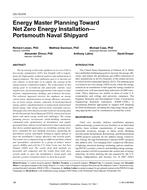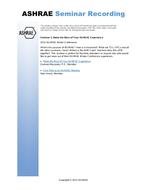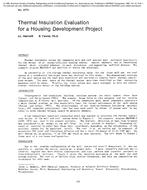Click here to purchase
Previous research suggests that children in child care centers (CCC) have increased risks for upper respiratory infections as compared to children in traditional family care settings. To identify design elements which could help mitigate endemic and pandemic infection hazards in CCCs, an industrial hygiene survey of indoor air quality (IAQ) conditions (temperature, relative humidity, carbon dioxide level and ventilation) was made in a toddler room of a mid-size suburban Washington DC CCC built in the mid-1980s. The results, including elevated carbon dioxide gas levels (1180-1650 ppm) and low relative humidity (RH) (21.0-22.5%) as compared to outdoors, and insufficient fresh air supplies and exhaust, point to a need for carbon dioxide monitoring and other measures to ensure healthy IAQ. CCCs care for groups with exquisite sensitivity to seasonal weather, illness, job demands, etc., and variable requirements. To provide reliable protection against poor IAQ, including airborne transmitted diseases, building environmental controls for CCCs should be informative to the occupants and responsive to changing conditions.
Citation: ASHRAE Conference Papers, Montreal, QC
Product Details
- Published:
- 2011
- Number of Pages:
- 7
- File Size:
- 1 file , 680 KB
- Product Code(s):
- D-ML-11-C011


